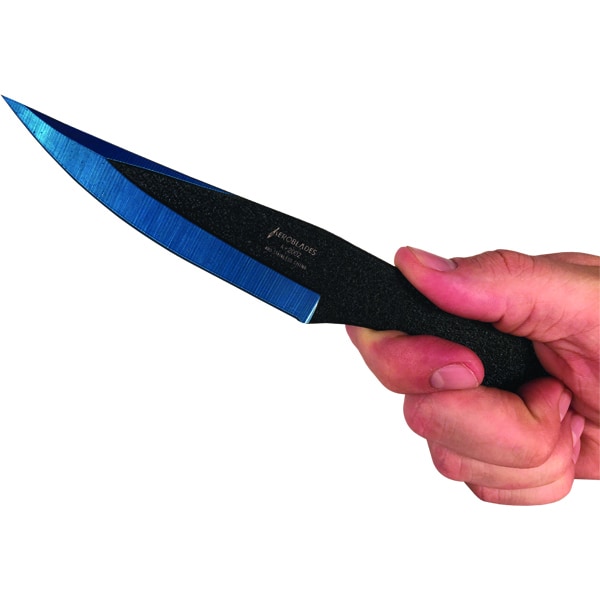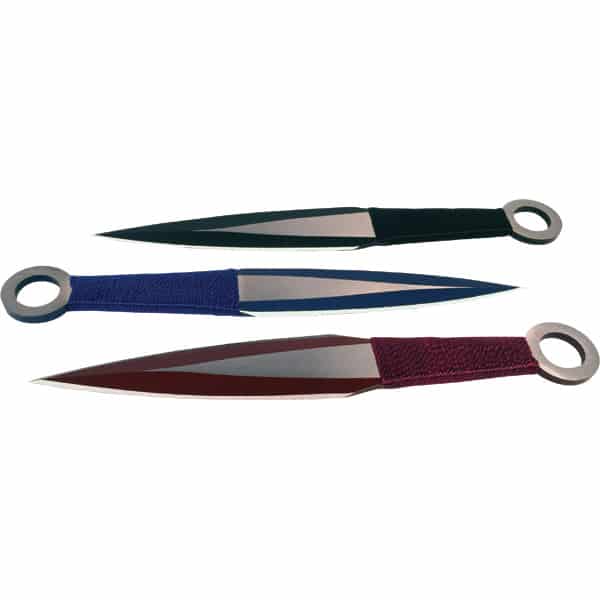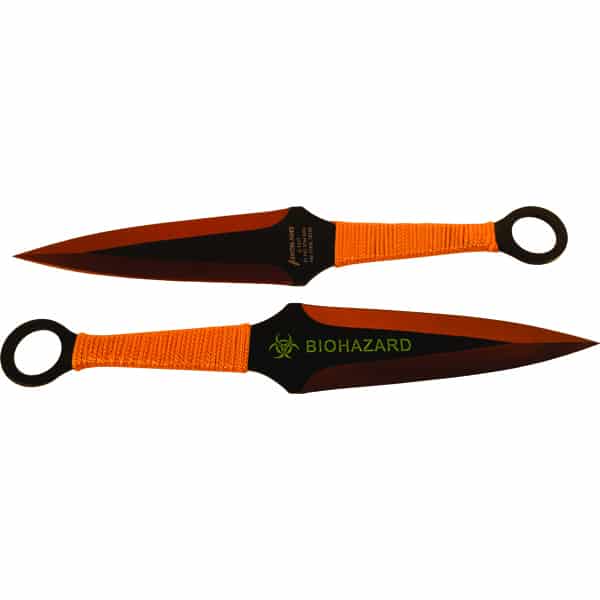

Venturing into the world of knife-throwing can feel overwhelming when you’re just starting out. Factors like the weight and balance of your knife can significantly affect your throwing technique.
Whether practicing the basic half-spin throw or delving into the more advanced no-spin technique, grasping the subtleties of your grip and stance is crucial. But the learning journey doesn’t end there.
Once you’ve mastered the basics, a whole realm of advanced strategies awaits you. Stay tuned to uncover these secrets to enhance your technique and advance your skills.
When selecting the ideal throwing knife, you should consider factors like weight, balance, length, handle design, and material to ensure peak performance and durability. Lighter knives can provide better control and accuracy, making them great for honing your skills.

Finding a well-balanced knife is crucial as it ensures predictable flight paths, enhancing both your precision and the knife’s longevity. The length of the knife also matters, as it should feel comfortable in your hand and allow for smooth rotations when thrown, which is essential for safety and effectiveness.
When handling design, opt for a secure and comfortable grip. This will improve your control over the knife, leading to more accurate throws.
Materials like 440 stainless steel are recommended for throwing knives due to their durability and performance characteristics. Steel knives maintain their condition over time, resisting wear and providing you with a reliable tool. By prioritizing these elements, you can find a knife that suits your style and enhances your throwing technique.
Mastering basic throwing techniques is crucial for improving your accuracy and consistency with throwing knives. These techniques include the half-spin and full-spin throws, each having its own nuances that require your attention.

To get it right, focus on finding the balance between the proper grip and stance. These terms are not just important; they form the foundation of your throwing skills.
Understanding knife rotation is key. It’s not just about the knife spinning through the air; it’s about controlling that spin around its center of gravity. The trick is to adjust the force and distance from the target to ensure your knife sticks where you intend. While it may seem complicated, it all comes down to practice and patience.
After learning the basic throwing techniques, let’s talk about how to improve your accuracy and consistency. When gripping the handle, you can choose between the Hammer grip or Pinch grip, depending on the knife’s weight and what feels comfortable for you.
The Hammer grip is great for stability and rotational force, making it perfect for powerful and accurate throws. On the other hand, the Pinch grip involves holding the knife between your thumb and forefinger, offering control and precision, especially with lighter blades.
Now, let’s focus on your stance. Stand sideways to your target to reduce the target area. Raise your throwing hand to eye level for better aim and control. This position lets you concentrate on the target with both eyes, improving your precision. To balance your foot positioning, place your dominant foot slightly forward. This setup provides stability during throws and enhances your control over the knife’s flight path.
Once you’ve learned the basics, it’s time to explore advanced throwing strategies that will elevate your skills to the next level. The no-spin technique is crucial for achieving precise and straight flight paths, pushing you to perfect your release and control.

As you grow more confident, trying out multiple rotations will further challenge your accuracy and skill level. Understanding how knife design and weight distribution affect your throws is essential; each knife has its own unique characteristics that influence its flight.
To truly excel, you’ll need to practice under different conditions. Wind and varying distances can significantly impact your throw’s behavior, requiring you to adapt quickly to maintain accuracy. Advanced throws go beyond hitting the target; they’re about adding style. Incorporating feints and trick shots into your routines brings creativity and flair, making your performance not only impressive but also entertaining.
Mastering these advanced strategies takes time and patience, but the rewards are definitely worth it. With each throw, you’ll discover more about the delicate balance between power, precision, and adaptability. This transformation will turn you into a skilled knife thrower who can easily handle any challenge.
Before diving into more advanced knife-throwing techniques, prioritize safety and establish a consistent practice routine. Knife throwing is an art that demands precision. You can improve your technique and accuracy by following the right safety measures and practicing regularly. Always wear safety gear like closed-toe shoes and gloves to protect yourself.
Start your practice with a soft target, such as a foam board, to reduce the risk of injury and prevent damage to your knives. Creating a safe throwing area is crucial, ensuring enough space and minimal risk of accidents. Remember, practice makes perfect and helps build muscle memory and control, which are vital for mastering throwing techniques.
For the best results and safety practices, consider seeking guidance from experienced practitioners. They can provide valuable insights and tips for effective practice sessions, ensuring you follow the best safety measures.
| Safety Tip | Practice Tip |
|---|---|
| Wear appropriate safety gear | Focus on technique |
| Use a soft target | Consistency is key |
| Establish a safe throwing area | Aim for accuracy |
| Seek guidance from experts | |
| Effective practice sessions matter |
Knife throwing requires mastering your grip, like the Hammer or Pinch, understanding the knife’s balance, and practicing your stance. You must adjust your force, visualize success, and correct your technique through practice.
When picking out a perfect throwing knife, go for one that spins consistently and hits its mark accurately. Make sure it doesn’t have any sharp edges or rounded corners, and that it’s well-balanced. Opt for durable materials like stainless steel, which provide predictable flights and last long.
When throwing knives, remember that they may not always hit the blade first. The outcome depends on your technique, the design of the knife, and the distance of your throw. Mastering your grip, stance, and release is essential to consistently achieving that perfect, blade-first impact.
Yes, the knife-throwing trick is real. You’ll need to practice a lot to get it right, as it’s all about skill and precision. Professionals make it seem simple, but mastering it takes time.
Pepper Spray Wholesale provides non-lethal self defense products and hidden cameras for you, your loved ones and your home. If you have any questions about the products, do not hesitate to Contact Us. Stay Safe!
Pepper Spray Wholesale
1867 Caravan Trail
Ste 105
Jacksonville, FL 32216
Call us toll free: (800) 859-5566